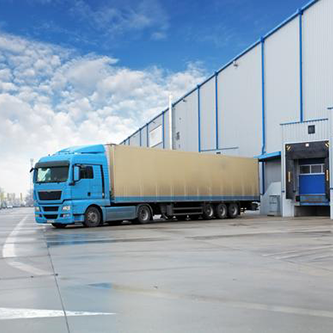
All US rail traffic is up as happens anytime the economy grows, but interesting to note is that according to Rail-Time Indicators (“RTI”), a publication of the American Association of Railroads, Intermodal freight traffic was up 5.2% in 2014 YOY and set a new annual record.
Overall, RTI reports that in 2014 total carloads reached 15.2 million, the highest since 2008 but still 12.3% below the peak of 17.3 million reached in 2006. So despite the sporadic reports we hear of heavy energy traffic stretching rail capacity to its limits, it is clearly not the case.
Not unexpectedly based on our research on the shifting of supply chain dynamics in the US, the percentage of container shipments has continued to increase as a percentage of all intermodal traffic since 1990, while the percentage of trailers has continued to decrease.
Popular POSTS
Triumph leases up Denver business center
14 February, 2017
TCG 2019 Economic Forecast & Investment Strategy
5 January, 2019
The future of industrial real estate is now thanks to retail
5 February, 2014
Interested in investing in industrial real estate? Why?
31 January, 2016
Supply Chain
31 January, 2016
Fort Mill deal featured in Charlotte Business Journal
15 January, 2016
The Impact Of Driverless Trucks On The U.S. Warehouse Market
6 August, 2019
Are increasing tariffs impacting demand for warehouses?
19 November, 2019
Logistics real estate risk in the age of COVID-19
13 January, 2021

If your answer is something along the lines of “good fundamentals,” then you’re probably chasing deals in the same 20 markets as everyone and their cat. This herd mentality is fine and there are certainly risk-related analyses to justify the approach, but the ability to deploy capital in those markets is becoming increasingly about how low you are willing to accept yields. The approach may also not be doing justice to the question as to why fundamentals are good in the first place. It’s not because of a bourgeoning US economy.
Fundamentals in US industrial real estate are strong because of e-commerce (and m-commerce and s-commerce, while we’re at it). It’s a for-real paradigm shift of the kind not seen since the industrial revolution, and if you’re not paying attention to the idea that such a shift will change every bit of the very supply chain itself, you may also be missing opportunities.
Thinking outside the box is no cliché in this arena. The new world of e-commerce has already shaken the retail real estate industry so dramatically that store locations and footprints and their very use (is it a store or a distribution center?) are all being called into question. Can big-box retailers really continue to “pay the freight” (pun intended) to open a store in a high-priced location if over 50% of the goods purchased will come from online orders and be shipped out to the customer’s home without the customer ever setting foot in the store? And can big-box distribution centers adequately deliver goods next day or same day to Boise all the way from Nashville? We believe that thinking outside the box in this environment means decentralization: smaller facilities closer to population centers.
Aside from delivery challenges, the efficiencies of the supply chain are being challenged further by changes in the shipping industry: cost pressure, overcapacity, Panama Canal expansion, continuing labor union struggles, and a newly emboldened anti-trust regulator in China putting the squash on P3, to name a few.
The bottom line is that to maximize the potential returns in the industrial niche, one must think in terms of the new dynamics from the demand side and resist following the crowd to the next 5-cap deal in the obvious markets. New critical locations are emerging. Intermodal has arrived. New requirements are being placed on facilities in those locations. Those who solve the puzzle and venture forth to the new world will prosper.
Popular POSTS
Triumph leases up Denver business center
14 February, 2017
TCG 2019 Economic Forecast & Investment Strategy
5 January, 2019
The future of industrial real estate is now thanks to retail
5 February, 2014
Interested in investing in industrial real estate? Why?
31 January, 2016
Supply Chain
31 January, 2016
Fort Mill deal featured in Charlotte Business Journal
15 January, 2016
The Impact Of Driverless Trucks On The U.S. Warehouse Market
6 August, 2019
Are increasing tariffs impacting demand for warehouses?
19 November, 2019
Logistics real estate risk in the age of COVID-19
13 January, 2021

Triumph Real Estate was recently featured in the Charlotte Business Journal about it’s acquisition of the 260,000 square foot Fort Mill building near Charlotte, South Carolina.
This is Triumph’s first venture into the robust Southeast region of the United States, with hopefully more forthcoming.
See more in Charlotte Business Journal articlePopular POSTS
Triumph leases up Denver business center
14 February, 2017
TCG 2019 Economic Forecast & Investment Strategy
5 January, 2019
The future of industrial real estate is now thanks to retail
5 February, 2014
Interested in investing in industrial real estate? Why?
31 January, 2016
Supply Chain
31 January, 2016
Fort Mill deal featured in Charlotte Business Journal
15 January, 2016
The Impact Of Driverless Trucks On The U.S. Warehouse Market
6 August, 2019
Are increasing tariffs impacting demand for warehouses?
19 November, 2019
Logistics real estate risk in the age of COVID-19
13 January, 2021
